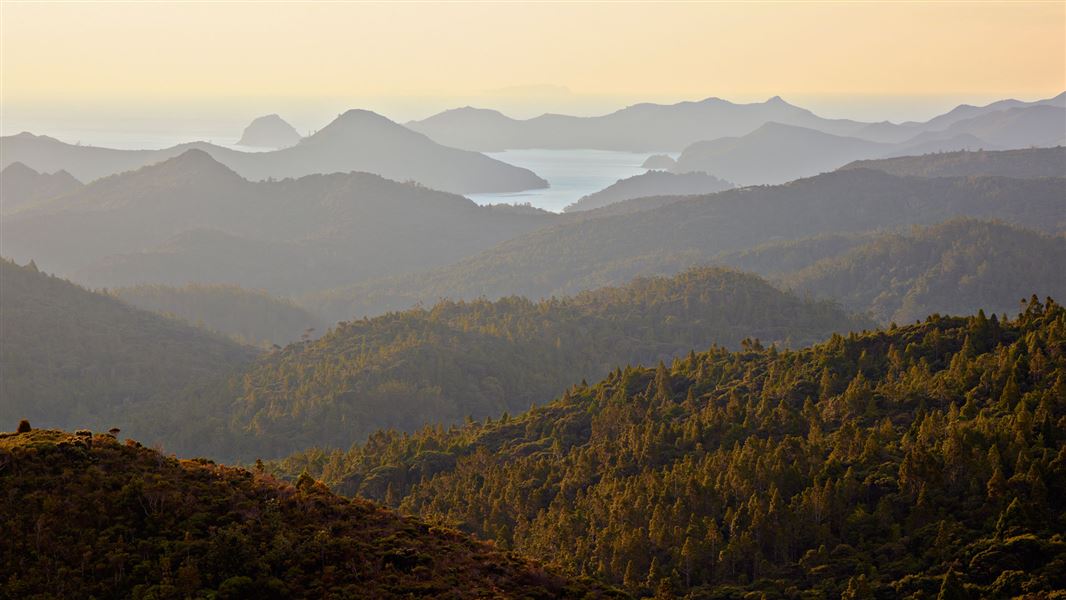The Aotea Conservation Park on Great Barrier Island/Aotea spreads over more than 12,000 hectares and offers multiple walking tracks for novice and experienced walkers. It's the perfect destination for outdoor enthusiasts and families.
Discover beautiful beaches, a wide variety of native birds and animals as well as the famous Kaitoke Hot Springs.
Take an easy 30 minute scenic flight, or a daily ferry to this island, rich with Māori heritage and numerous archaeological sites.
Video
Great Barrier Island lies 100 km northeast of downtown Auckland on the outer edge of the Hauraki Gulf.
Several companies service the island by sea and air. Taxis and car rentals are available on the island. At peak holiday times, buses run unscheduled trips to all campsites on the island from Shoal Bay Wharf, Tryphena Harbour.
Find authorised transport operators to this island.
DOC staff are on 24 hour duty at Great Barrier campsites during the peak holiday period.
Rules for the Hauraki Gulf Maritime Park
- Fires and portable barbeques are not allowed.
- Take your rubbish with you – there are no rubbish bins.
- No camping.
- Some activities such as weddings need a permit.
- Commercial filming needs a permit.
- Commercial guides need a permit.
These are part of the Hauraki Gulf Maritime Park by-laws. Read the full by-laws.
All drone use must be authorised by DOC
You must have a permit to fly a drone on public conservation land.
Visit our Drone use on conservation land page for more information.
In the island's centre, spectacular bluffs and ridges rise to the highest peak, Hirakimata or Mount Hobson, at 621 m. To the west, forest covered ranges meet the coast, a maze of bays, islands and indented fiords. The eastern coastline has sweeping white sands and surf beaches, often backed by tidal creeks and wetlands.
Hirakimata and other high points in the centre of the island are the main nesting area for black petrel in New Zealand. Over 60% of New Zealand's entire pāteke or brown teal population live on the island. Many of these small brown ducks frequent the wetlands of the Whangapoua estuary.
This is also one of only a few offshore island groups containing spotless crake and fern bird. It is a stronghold for North Island kaka and banded rail. There are over 13 species of lizard, including the rarest skink in the region – the chevron skink.
Stop kauri disease and protect kauri
- Scrub all soil off shoes and gear.
- Use cleaning stations.
- Always stay on the track.
Check you are pest-free
Check, clean, and seal your gear to ensure you don't bring pests, soil, and seeds.
DOC Customer Service Centre
| Phone: | 0800 275 362 |
| Email: | greatbarrier@doc.govt.nz |
| Address: | Aotea / Great Barrier Island Office |
